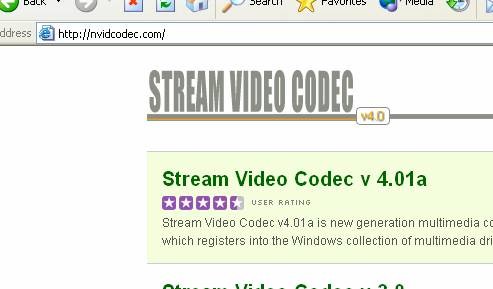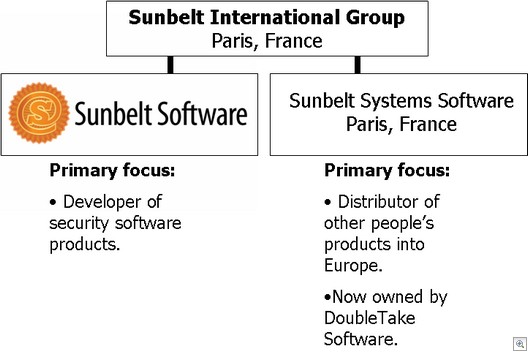Sunbelt developer Peter LePage (he works on Kerio here) went to WinHec2006 last week and offered this brief roundup of the conference:
Technology Summary
Although WinHEC is billed as a hardware and technical conference, Microsoft’s emphasis was largely marketing hype, pushing their new Vista and Longhorn offerings. Microsoft’s marketing research into industry trends does provide valuable insight into the next year’s computing marketplace.
• The majority of computer sales have been laptops rather than desktops and they see this trend continuing and increasing into next year.
• Processor vendors Intel and AMD are investing heavily into 64 bit, multi-core processor offerings tailored toward consumer laptops.
• Microsoft is rapidly embracing 64-bit processing, and rapidly deprecating 32 bit support.
Vista & Longhorn
Vista and Longhorn, the code names for Microsoft’s next consumer and server operating systems are rapidly approaching. All WinHEC2006 attendees were sent home with Beta 2 of both operating systems.
Microsoft is now indicating that Vista (32 and 64 bit versions) consumer operating system will be released to manufacturing in early 2007. Windows Longhorn server will be ready for manufacturing in early 2008.
64 Bit Processing Is Here
Microsoft, AMD and Intel made it clear that 64 bit, multi-core compute power will be available to consumers at years end. AMD has already released their Mobile Turion dual core 64-bit processor and Intel is not far behind.
Microsoft has stated that there will be no further 32 bit server offerings, only 64 bit. Additionally, they stated that Vista and Longhorn are built using the multi-processor kernel, with the Uni-processor kernel being retired. Microsoft also claimed that Exchange 2007 would be a 64 bit only offering.
Server Virtualization
Microsoft and Intel are investing heavily in this space with Intel providing hardware assistance with the processor for virtualization and Microsoft capitalizing on that hardware advancement.
As the name implies, Server Virtualization provides the ability for multiple versions of a 32-bit or 64-bit OS to run in parallel on a single physical server machine. Additionally each virtual OS can be a multi-core virtualization. Microsoft’s virtualization allows for dynamic addition of virtual partitions to a physical server or migration of physical servers to virtual partitions dynamically. The virtualization environment provides for fail over or dynamic load balancing of server work loads, increasing physical server utilization while reducing cost. All WinHEC2006 attendees were sent home with Windows Virtualization Server.
Hardware Advances
As alluded to above, there are many hardware advances hitting the streets near term that will dramatically change the way software is developed. There are 64-bit dual core offerings available today. (Dual or multi core refers to two or more separate processor elements within a single piece of silicon.) Vista 64-bit available by years end, will revolutionize the desktop and laptop marketplace, as major hardware manufacturers (HP/Compaq, IBM, Dell, Gateway to name a few) provide 64 bit offerings bundled with Windows Vista 64-bit.
Intel’s vPro architecture adds the ability to run a “Service” OS in parallel with the “User” OS in order to provide increased security and asset management is forecast to be invaluable to corporate desktops. Symantec is one company already working with Intel to enter the “Service” OS space.
10 Gigabit Ethernet cards are available today. The sheer data rates of these cards cripple a standard 2000 or XP OS due to the number of I/O operations (interrupts) the OS needs to handle. So, vendors are implementing “Chimney Offload” ability into these cards to offload the processors required activity. Chimney Offload refers the cards ability to directly DMA data into memory without needing the processor to intervene.
Microsoft is looking forward (with probable input from Intel, AMD) to multi-core (more than two) processors per silicon die. Some of Microsoft’s presentations indicated four, eight and sixteen way cores.
Software Advances
64-Bit Multi-core support
As noted above, both Vista (64-bit) and Longhorn support 64 bit processors and multi-core support. The Uni-processor kernel has been deprecated. All 64-bit drivers for Longhorn (and perhaps Vista 64) MUST be signed, or the OS will not load them. Driver developers will need to pay much more attention to synchronization as multi-core becomes the norm rather than the exception.
New, Rewritten Network Stack
The network stack (NDIS 6.0) has been completely rewritten for Vista and Longhorn making what is standard practice today (hooking) obsolete in these OS offerings. Microsoft representatives stated that the new stack would not be back ported to XP or 2000 environments.
Native Support for Wireless Devices
The new network stack provides native support for wireless devices rather being an after thought as with current 2000 or XP offerings.
Windows Filter Platform (WFP)
Microsoft has presented a new API set for monitoring, filtering and modifying network traffic. WFP is available on Vista and Longhorn to provide enhanced network security. The majority of a firewall’s functionality has been built-in to WFP, making it easer than ever for third parties (such as Sunbelt) to provide enhanced solutions. The down side of this is that Panda and Symantec are among the many already working with this technology. Microsoft representatives stated that WFP would not be back ported to XP or 2000 environments.
PatchGuard
PatchGuard represents kernel thread that watches kernel structures (the ones that most 3rd parties “hook” today) and bug check (BSOD) the machine if a modification has been detected. Such modifications are deemed unsafe and will not be tolerated by the new OS offerings. I’m sure that PatchGuard is present in Longhorn; however, its unclear if it’s present in Vista.
Windows Sockets Kernel (WSK)
Windows Sockets Kernel, as the name implies provides Winsock Like support in kernel space that REPLACES TDI drivers. Basically all of Winsock’s capabilities are now available in kernel mode, which includes Connection, Connectionless, raw sockets, SetSockOpt and asynchronous support. Additionally, WSK is capable of handling both Ipv4 and Ipv6 traffic over a single socket.
Microsoft representatives stated that WSK would not be back ported to XP or 2000 environments.
iSCSI support
Vista and Longhorn support iSCSI (SCSI protocol over IP) devices, which are network attached storage devices. Given that Gigabit is available at low cost and 10 Gigabit is available, we should see a proliferation of Network attached storage (NAS) within the next year or so. The network stack will “see” all of this iSCSI traffic, intermixed with other network traffic, effecting how one monitors and filters overall network traffic.
Microsoft Windows Hardware Development Central link here.
Alex Eckelberry







